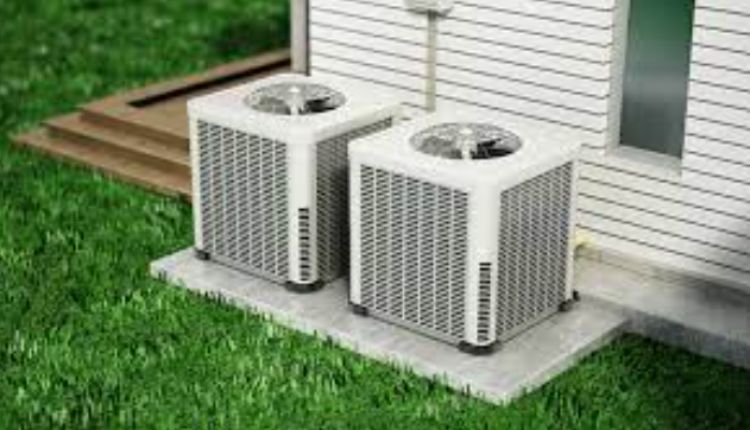Protecting Your Home Comfort System When Severe Weather Strikes
When storm clouds gather and weather warnings flash across your screen, your HVAC system probably isn’t the first thing on your mind. But taking time for proper HVAC storm preparation can save you from uncomfortable days without heating or cooling, prevent costly damage, and keep your family safe during extreme weather events. This guide will walk you through everything you need to know to protect your heating and cooling system before, during, and after severe weather hits.
Why HVAC Storm Preparation Matters
Your HVAC system represents one of the largest investments in your home, and it’s also one of the most vulnerable during severe weather. Strong winds, flooding, lightning strikes, and power surges can all cause serious damage to your heating and cooling equipment.
Good HVAC storm preparation isn’t just about protecting expensive equipment. It’s about ensuring your family stays comfortable and safe when you need it most. Nothing is worse than having your heating system fail during a winter storm or losing air conditioning during a summer heat wave when repair technicians are overwhelmed with emergency calls.
Before the Storm: Essential Preparation Steps
Taking preventative measures before severe weather arrives is the best way to protect your HVAC system. These simple steps can make a big difference when storms hit.
First, inspect the area around your outdoor unit and remove any objects that could become airborne in high winds. This includes patio furniture, gardening tools, branches, and other debris. Even small items can cause significant damage when propelled by storm-force winds. If severe weather is predicted, consider covering your outdoor unit with a manufacturer-approved cover that’s properly secured.
Protecting Against Power Issues
Power outages and electrical surges are common during storms and can wreak havoc on your HVAC system’s sensitive electronic components. Installing a whole-home surge protector is an excellent investment to shield not just your HVAC system but all your home’s electronics.
Consider having a qualified electrician install a dedicated surge protector for your HVAC system. This additional layer of protection can prevent costly damage to circuit boards and other electronic components that are expensive to replace. As part of your HVAC storm preparation, you might also want to investigate backup power options like generators if you live in an area prone to extended outages.
When to Turn Off Your HVAC System
One of the most important aspects of HVAC storm preparation is knowing when to shut your system down. During a severe thunderstorm with lightning, it’s safest to turn off your HVAC system at both the thermostat and the circuit breaker. This helps prevent damage from power surges that often accompany lightning strikes.
If flooding is expected in your area, turn off the power to your HVAC system before water levels rise. Standing water can cause catastrophic damage to your system’s electrical components and create dangerous situations. Never attempt to operate your HVAC system if the outdoor unit has been submerged in floodwater.
Preparing for Different Types of Storms
Different weather events require specific HVAC storm preparation approaches. During hurricane season, secure your outdoor unit with hurricane straps if you’re in a high-risk area. These specially designed straps can help prevent your unit from being displaced by strong winds.
For winter storms, make sure to clear snow and ice from around your outdoor unit, but never place a cover over it while it’s operating. Ensure that your carbon monoxide detectors are working properly, as winter power outages sometimes lead to the improper use of alternative heating methods that can produce this deadly gas.
Creating an HVAC Emergency Plan
Every family should have an emergency plan that includes considerations for heating and cooling. Know where your main electrical panel is located and which breakers control your HVAC system. Have the contact information for your trusted HVAC professional easily accessible.
If you rely on your HVAC system for medical reasons, your emergency plan should include backup power solutions or alternative locations where you can stay during extended outages. Discuss this plan with everyone in your household so that everyone knows what to do if your system goes down during severe weather.
After the Storm: Safety First
Once the storm has passed, don’t rush to turn your HVAC system back on. First, carefully inspect your outdoor unit for any visible damage. Look for debris, disconnected lines, or signs of flooding. Check your indoor equipment for water damage if flooding occurred in your area.
If you notice any damage or unusual sounds, smells, or performance issues, turn off your system immediately and contact a professional. Attempting to run a damaged HVAC system can cause further harm to the equipment and potentially create safety hazards in your home.
When to Call a Professional
Some post-storm situations always require professional attention. If your outdoor unit was submerged in floodwater, don’t attempt to turn it on until it’s been inspected and serviced by a qualified technician. Floodwater contains contaminants that can damage components and create health hazards.
If you smell gas near your furnace after a storm, leave your home immediately and call your gas utility from a safe location. Never attempt to address gas leaks yourself, as they present serious explosion and fire risks.
Maintaining Your System Year-Round
The best HVAC storm preparation happens long before severe weather is in the forecast. Regular maintenance keeps your system in optimal condition, making it more resilient when faced with challenging conditions. Schedule professional maintenance at least twice a year – typically in spring for your cooling system and fall for your heating system.
During these maintenance visits, technicians can identify and address potential vulnerabilities before they become major problems during a storm. They’ll check electrical connections, inspect components for wear, and ensure your system is operating efficiently.
Upgrading for Better Storm Resilience
If you live in an area frequently affected by severe weather, consider upgrading to more storm-resistant HVAC equipment when it’s time to replace your system. Modern systems often include better safeguards against power fluctuations and more durable components designed to withstand harsh conditions.
Smart thermostats can also be valuable during storms, as they can alert you to power outages and help manage your system more efficiently when power is restored. Some can even be programmed to delay startup after a power outage to prevent damage from power surges when electricity returns.
Final Thoughts on HVAC Storm Preparation
Taking time for proper HVAC storm preparation gives you peace of mind when severe weather threatens. By following these guidelines, you’ll help ensure your heating and cooling system remains operational when you need it most and avoid costly repairs or premature replacement.
Remember that your HVAC system is an essential part of your home’s infrastructure, especially during extreme weather events. Investing a little time in preparation and maintenance now can save you from discomfort, expense, and stress when storms arrive. Stay safe, stay comfortable, and be prepared!






